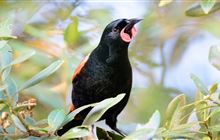Predator Free New Zealand 2050 to be a massive team effort
Archived content: This media release was accurate on the date of publication.
Introduction
Achieving the goal of a Predator Free New Zealand by 2050 will require a massive team effort across the public, private, iwi and community sectors, Conservation Minister Maggie Barry says.Date: 25 July 2016 Source: Office of the Minister of Conservation
The Government today announced the adoption of the Predator Free New Zealand 2050 target and plans to set up a new public-private partnership company by the beginning of 2017 to help fund regional large-scale predator eradication programmes.
“New Zealand’s unique native creatures and plants are central to our national identity. They evolved for millions of years in a world without mammals and as a result are extremely vulnerable to introduced predators, which kill around 25 million native birds every year,” Ms Barry says.
“Now is the time for a concerted long-term nationwide effort to rid ourselves of the introduced rats, stoats and possums that have placed so much of our natural heritage in jeopardy.”
Under the strategy the new government company, Predator Free New Zealand Limited, will sponsor community partnerships and pest eradication efforts around the country.
“By bringing together central and local government, iwi, philanthropists, and community groups, we know that we can tackle large-scale predator free projects in regions around New Zealand,” Ms Barry says.
“Project Taranaki Mounga and Cape to City in Hawke’s Bay are great examples of what’s possible when people join forces to work towards a goal not achievable by any individual alone.”
The Predator Free 2050 Project will combine the resources of lead government agencies the Department of Conservation and the Ministry for Primary Industries to work in partnership with local communities.
Primary Industries Minister Nathan Guy says the goal of a Predator Free New Zealand by 2050 will have major positive impacts for farmers and the wider primary sector.
“Possums and ferrets are the main carriers of bovine TB, which is a very destructive disease for cattle and deer. In this year’s Budget the Government committed $100 million towards combined eradication efforts with industry starting with cattle and deer by 2026,” Mr Guy says.
“By pooling our resources and working together we can jointly achieve our goals of both eradicating bovine TB, and achieving a predator free New Zealand.”
Not all the technology to make New Zealand predator free yet exists, and the Biological Heritage National Science Challenge will have an important role in developing the science to achieve the predator free goal.
“New Zealand is a world leader in conservation technology and research,” Science and Innovation Minister Steven Joyce says. “The Biological Heritage Challenge has an established network of scientists who are ready and willing to take on the Predator Free Challenge. For the first time technology is starting to make feasible what previously seemed like an unattainable dream.”
Predator Free New Zealand Limited will have a board of directors made up of government, private sector, and scientific players. The board’s job will be to work on each regional project with iwi and community conservation groups and attract $2 of private sector and local government funding for every $1 of government funding.
Four goals for 2025 have been set for the project:
- An additional 1 million hectares of land where pests have been supressed or removed through Predator Free New Zealand partnerships
- Development of a scientific breakthrough capable of removing at least one small mammalian predator from New Zealand entirely
- Demonstrate areas of more than 20,000 hectares can be predator free without the use of fences
- Complete removal of all introduced predators from offshore island nature reserves
“These are ambitious targets in themselves, but ones that we are capable of reaching if we work together,” Ms Barry says.
“New Zealanders have rightly taken great pride in our conservation efforts to date. If we harness the strength of everyone who is keen to be involved in this project, I believe we will achieve the vision of a Predator Free New Zealand by 2050 and make our landscape a safe haven again for our native taonga species.”

